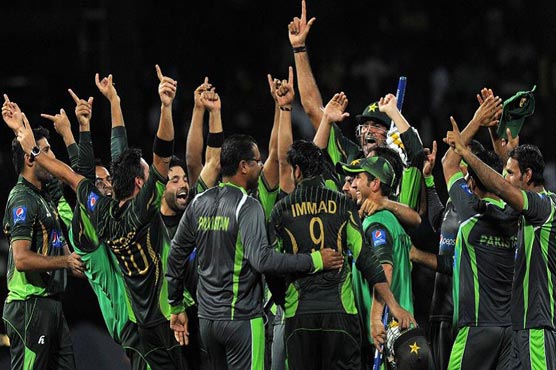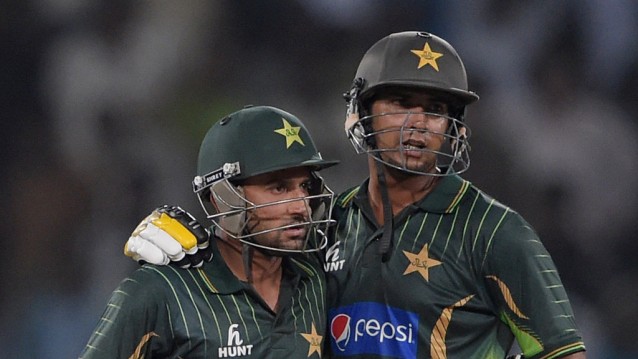Revival of the Spirit

Why both cynics' and optimists' viewpoint on the 'revival' is not quite right!
Is it a flash in the pan or is it something more? Cynics would say a typical Pakistani rise that is bound to fall; optimists would say Pakistan is now a top team ready to beat the best. Both are not quite right. Pakistan may not sustain its rise in ranking but more importantly it must sustain the most precious thing that was missing for years in our team, more than steady batting, good fielding and consistent bowling -- and that is the spirit to fight and fight till the last ball.
Modern One Day cricket has evolved over a period of time and so has the approach to play this sport by teams all over the world. With the Introduction of Power Play, two new balls, drop in pitches, DRS, cricket has increasingly become a batsman’s game. Where previously 250 would be considered a competitive total, 300 is now considered a par score. The margin of error for bowlers has decreased with the new laws coming into play. Teams have focused on strengthening their batting line up by adding extra batsmen and now improvise towards the end of the innings where the last 5 overs can produce such a runs galore that any score prediction becomes difficult.
Yester year’s steady build up scoring strategy is no longer effective. In the 90s, the first 10 overs typically featured a slow start by a team in an attempt to preserve wickets and gain momentum towards the end of the innings. But with the advent of Power Play in the first 10 overs with 5 fielders in the circle, batsmen now have the license to take the aerial route right from the word go. The middle overs are now speedy but with focus on rotating the strike at a run rate of 5 to 6 runs per overand then going for a run blast in the last few overs. The latest law of having 5 fielders outside the circle in the last 10 overs may prove to offer some respite for the bowlers, but the speed, tempo and the approach has made the sport more fast paced.
Whereas other teams have adapted themselves to the new rules and regulations and more importantly approach,Pakistan has struggled to adjust their mindset, skill set and strategy. From 2012 to 2014, Pakistan played 54 ODI matches losing 28 and wining 24. Of these 54 matches played Pakistan crossed 300 runs only 4 times – a telling fact. Much of this can be attributed to Pakistan’s inability to take advantage of the rules, cope with the aggression of the other teams, and develop a well thought out game plan. The block or slog mindset has cost them plenty of matches. Consistent opening stand became an extinct species as Pakistan has struggled to find an opener since Saeed Anwar with an average of 40.Moreover, Pakistani fielding and wicket keeping has been erratic andthe lack of a batting allrounder also hurt Pakistan amongst other things.
However, the ODI and T20 series win in Sri Lanka has restored some of the lost faith in the fans. It might not be a sign of greatness, but the change of approach and a positive mindset has shown that the spark in the soul is reigniting. Azhar Ali has praised coach WaqarYounis and Mushtaq Ahmad saying the thinktank has always encouraged them to play positively. However it is not the big names that have made a difference but the lesser stars who have led the way to inspire the big ones to prove their worth.
Talking of all-rounders, Pakistan has always been gifted by allrounders like WasimAkram and Abdul Razzaq who would come out to bat late in the day with matches at no return stages and just play those innings that made for fairy tale wins. In the last few years Pakistan had almost given up on this spot. Anwar Ali’s claim to fame was the Under 19 World cup match against India but he failed to live to that promise. He has been criticized for his lack of pace, inability to swing the ball and mediocre batting. However in the last T20 match he showed glimpses of what he can do with the bat. Moreso his contribution in the field has been spectacular. It is his new found self confidence, which is more impressive than his actual feat;replying to Ramiz Raja’s query on what he was thinking when Malinga was bowling to him, he replied ‘I don’t play the bowler, I play the ball”.
It is the small things that make a big difference; it is these moments of inspiration that spark the spirit. Fielding has been a given failure in Pakistani team traditionally. What rigorous training, counseling and criticism could not do, Mohammad Rizwan who is originally a wicket keeper did with his alacrity in the team. His breathtaking parallel leap in the air to catch the ball going over the boundary was almost a replay of Jonty Rhodes acrobatics in the first ODI. Though he could not catch it and it was a six, the sheer fearless, come what may effort, changed the complexion of Pakistani fielding; so much so that we saw Irfan actually chasing sprightly and bending down to stop balls at fine leg rather than just lumbering and hiding behind his huge frame.
Another moment of inspiration were some cameo batting performances. With Azhar Ali batting with his usual consistency it was players like Sarfraz who made a 77 of 74 balls, Rizwan 52 of 38 balls and Imaad Wasim’s 24 of 14 balls which compelled the seniors to raise their game. Again the lifting of the batting standards has been led by the gutsy Sarfraz, who can bat on any number and can make bowling changes and field placing a big challenge for the opposing captains.
Wicket keepers are no longer part of the tail and are expected to be not only excellent wicketkeepers but complete batsmen as well. The likes of Sangakara and Dhoni, who also captained their sides, have converted this art into a science. The Akmal brothers legacy of poor wicket keeping with erratic batting performances has been a dampening factor in Pakistan’s ability to win matches. Kamran, Umar and Adnan Akmal were all unsafe hands. Their exit from this position has made way for Sarfraz and Rizwan who not only take brilliant catches behind the wickets but are aggressive busy batsmen who can be relied to score big, fast and consistently.
Bowlers have also risen to the task. Yasir and Imad Waseem provide variety and bite in spin but more importantly their competitive fire is the hallmark of the thirst to learn and the hunger to do more. This is why even in the absence of Irfan, Wahab, Ajmal and Hafeez, Pakistan always looked attacking and dangerous in the field. It is this competitiveness that produced great teams in Australia and West Indies in the past and it is this competitiveness that has made the world notice New Zealandeas a major contender in the World Cup.
Adversity brings opportunity. Contrary to perception, that losing to BD was the worst thing to happen to Pakistan cricket, it led to a team fighting for rediscovery. Fresh blood had to be inducted; and it was; and it has definitely infused a new energy and spirit in the team. To say it is a sign of great things to come would be premature considering the frailties of Pakistani cricket. For now, one can appreciate the effort of the team to win a series in Srilanka after 9 years. The English series in October should be the one to look forward to especially considering England have recently regained the Ashes. For Pakistan the one thing that has always stood between mediocrity and greatness has been their inconsistent and languid approach. In this team the right combination is there, the talent is visible, but would they carry on where they left in Sri Lanka is the question. The last ball of the tour in Sri Lanka spoke of the spirit that needs to be nourished and maintained. Last over, last wicket, 5 balls and 5 runs needed, and Imaad Wasim comes down the wicket audaciously and with all the confidence in the world lifts the ball for a six to end the tour on a befitting note. It is this self-belief, which was missing and it is this self-belief that transforms the impossible to possible.

By Zainab Abbas
The writer is a sports analysts and hosts Dunya News popular cricket analysis show Cricket Dewangi

